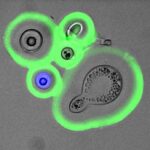Lien vers Pubmed [PMID] – 40950950
Lien DOI – 10.1016/j.lanepe.2025.101365
Lancet Reg Health Eur 2025 Aug; 55(): 101365
Intravenous injection drug use (IVDU) is an established but infrequent risk factor for yeast fungaemia. We aimed to identify features and outcomes of yeast fungaemia associated with IVDU in a nationwide surveillance network in France.We prospectively included episodes of yeast fungaemia in adults between 2012 and 2022. Episodes with any history of IVDU were considered IVDU-associated. We compared clinical characteristics, infecting species, antifungal treatments, and 90-day mortality between groups. We used Fisher’s exact test for categorical variables and the Kruskal-Wallis test for continuous variables.We recorded 9549 episodes of yeast fungaemia among 9132 adults. Among these, 183 (1·9%) were IVDU-associated. Compared with non-IVDU, individuals with IVDU-associated fungaemia were younger and less likely to have a history of malignancy (13·8%, 20/145 vs. 49·5%, 4447/8987, p < 0·0001) or recent surgery (24·3%, 34/140 vs. 37·3%, 3261/8,733, p = 0·0014), and more likely to have deep-seated infections (14·5%, 21/145 vs. 3·4%, 307/8987, p < 0·0001). IVDU cases less often involved Candida albicans (30·1%, 55/183 vs. 47·6%, 4458/9366, p < 0·0001) and more often involved mixed-species infections (13·1%, 24/183 vs. 4·3%, 402/9366), p < 0·0001. Meyerozyma guilliermondii and Wickerhamomyces anomalus were overrepresented among IVDU cases (6·0%, 11/183 vs. 0·5%, 48/9366, p < 0·0001 and 5·5%, 10/183 vs. 0·05%, 5/9366, p < 0·0001, respectively). The crude 90-day case-fatality ratio was 20·7% (95% CI: 13·7%-29·2%) in the IVDU group versus 48·4% (95% CI: 47·3-49·5%) for non-IVDU.IVDU-associated yeast fungaemia presents distinct clinical and microbiological characteristics, highlighting the need for tailored diagnosis and management.Financial support from Santé Publique France and Institut Pasteur, Paris.







